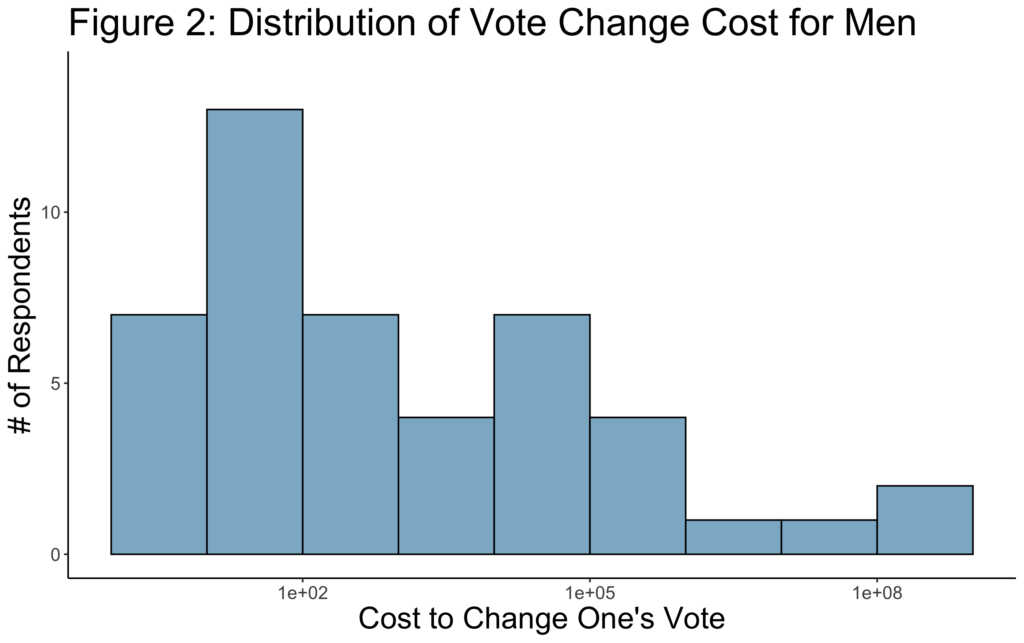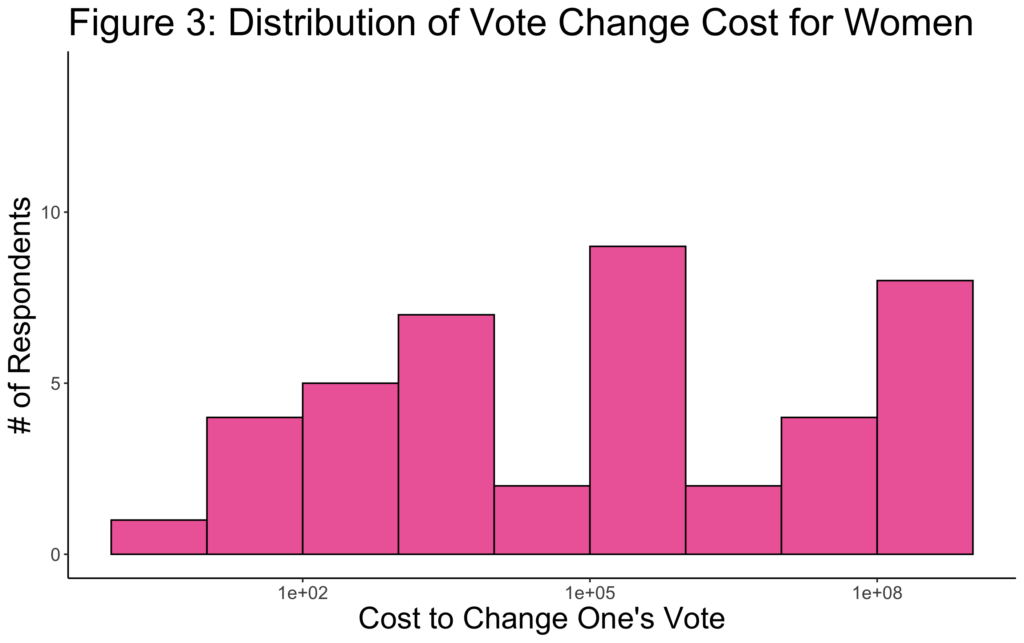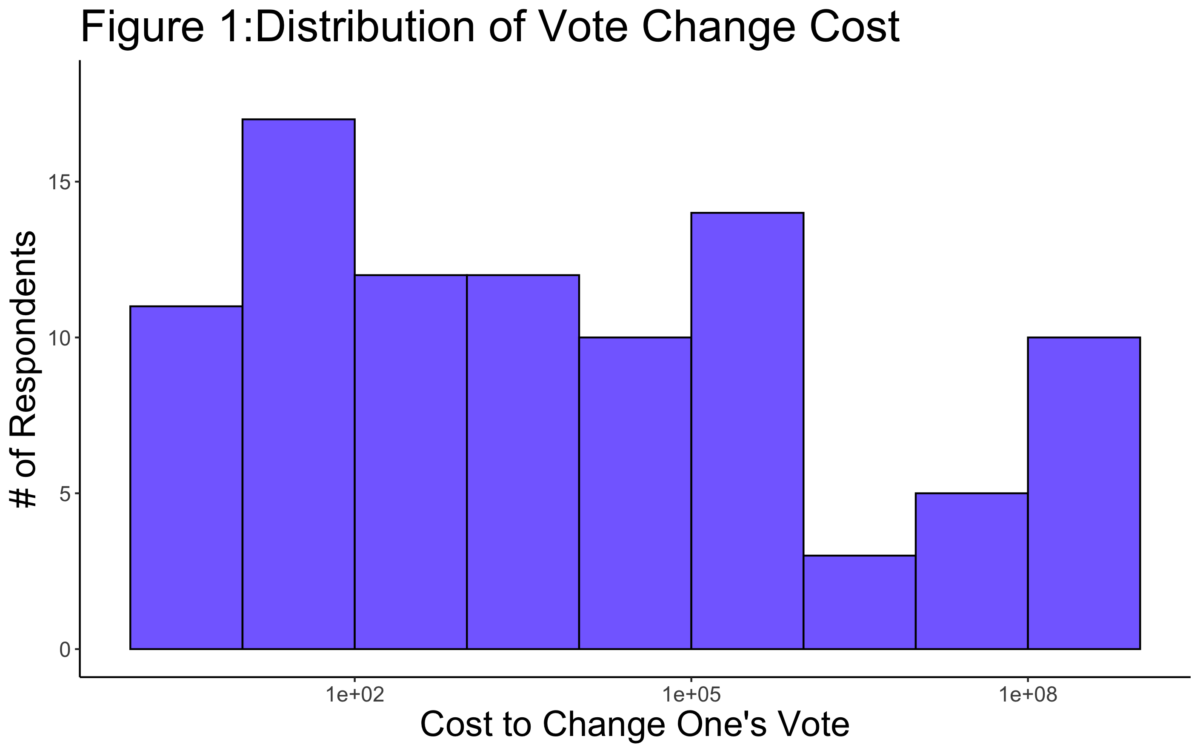ABSTRACT
The polling division of the Zamboni surveyed the Tufts student body on who they intended to vote for in the 2024 presidential election and, crucially, how much money it would take to make them vote for the other candidate. We found that Tufts students overwhelmingly support Harris: 129 out of the 152 surveyed supported Harris, with only 8 dissenting votes for Trump. More interestingly, the amount of money it took to change people’s vote was distributed evenly along a logarithmic scale with values ranging from one dollar to one billion dollars.
INTRODUCTION
This study’s goal was twofold: firstly, we wished to assess the voting tendencies of the Tufts student population. Secondly, we wished to see how committed the libtards of Tufts are to their beloved Momala — how much moolah would tempt them to vote for the dreaded Donald?
METHODOLOGY
Our poll was conducted at the club fair by pollsters who loudly shouted at anyone walking by our table. We had 152 respondents to our poll, and most of them answered most of the questions. The sample ended up being heavily skewed towards freshmen, with men slightly overrepresented.1 Different majors were evenly represented enough that we did not feel like investigating this further. Our poll was neither cleaned nor weighted. Anyone who wrote more than nine zeroes or said “no amount of money” to the last question was listed as needing infinity money to change their vote.2 Many people, upon reading the final question, asked the chief pollster, “I vote in a deep blue state, so is it ok if I only say $1000?” to which he would respond, “I live in California, and I’d switch my vote for $50.”


RESULTS
Tufts students demanded an absurd amount of money to switch their vote. Figure 1 shows the distribution is relatively evenly distributed, but only if you plot it logarithmically.3 Among the 72.7% of students who could be bought off, about the same number of people gave an answer between $0 and $1,000, and an answer between $1,000 and $1,000,000. The histograms are also very different for men and women. As illustrated by Figures 2 and 3, men demand far less money to switch their votes than women. This makes sense.4
DISCUSSION
When you consider how many of these morons vote in deep blue states, our results give you a deep appreciation for how silly the average Tufts student is. They also point to the trend in American politics of very strong party identification on the individual level.5 The respondents to our polls were not particularly concerned with their own interests, nor were they really with the broader interests of society.6 For our respondents, party-affiliation and their vote for #Kamala2024 are actually a deep part of their identity; to not vote for her would cross some internal moral line. Whether this trend in politics is good or bad is up to the reader to decide. Join us next time at Zam Polling™, where we find how many rare coins it would take for swing state electors to commit election fraud.
______
- #polysci
- 27.3% of our respondents!
- To clarify for the humanities kids in the back, this means the first bar represents
the numbers of people who answer $1 to $10, the second bar represents $10 to $100,
and so on. - Abortion.
- The Hollow Parties: The Many Pasts and Disordered Present of American Party
Politics, Daniel Schlozman and Sam Rosenfeld. - In theory, they could’ve donated their bribe money to charity


